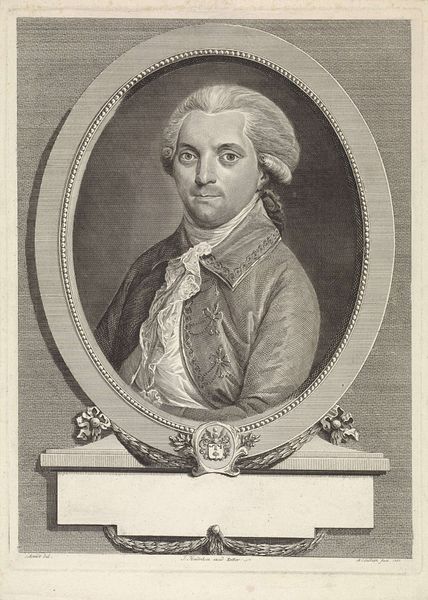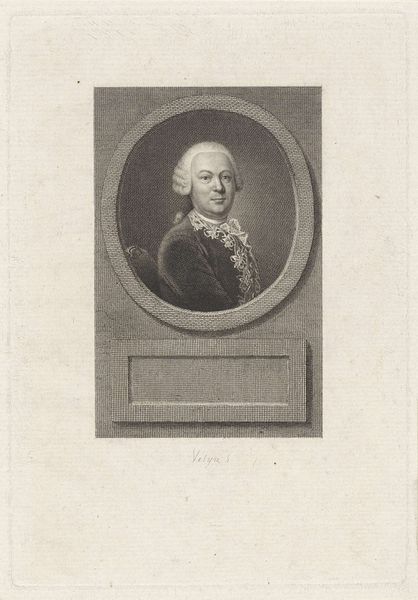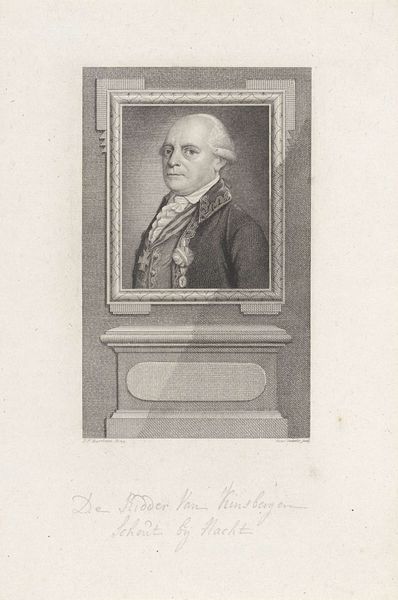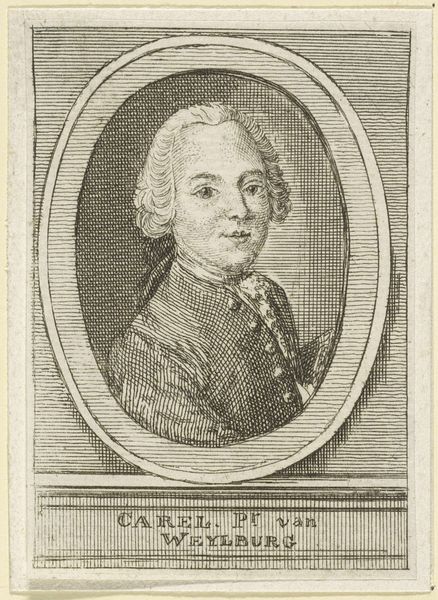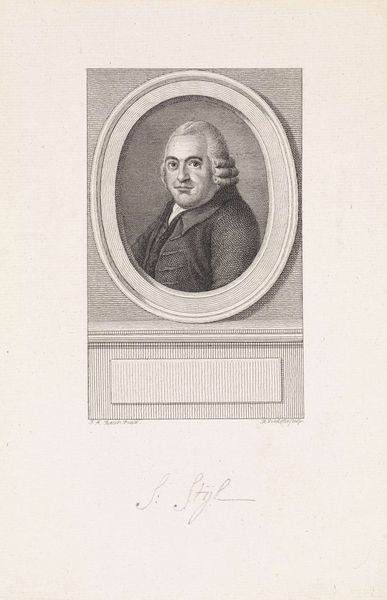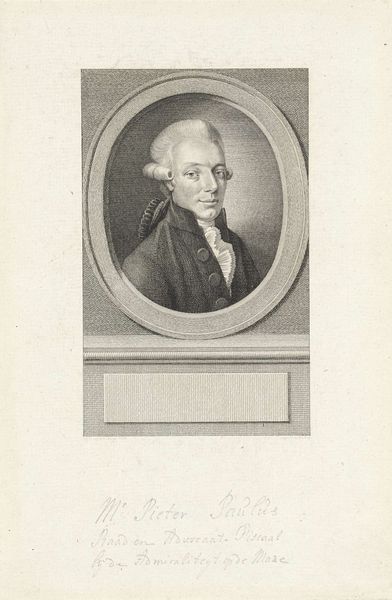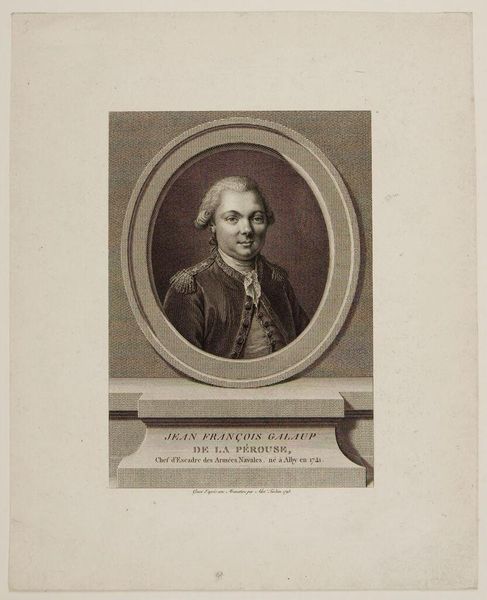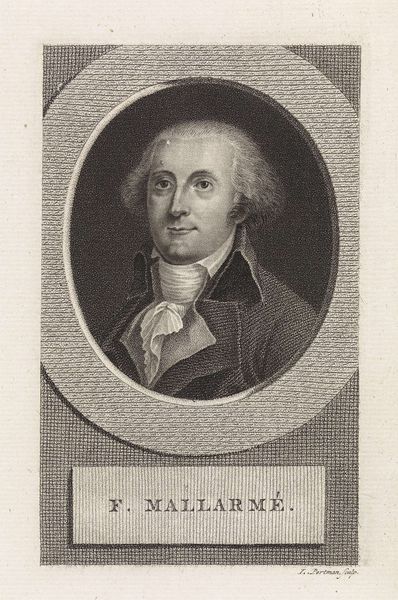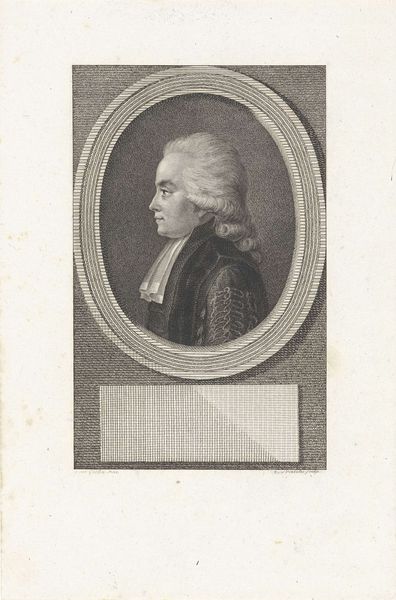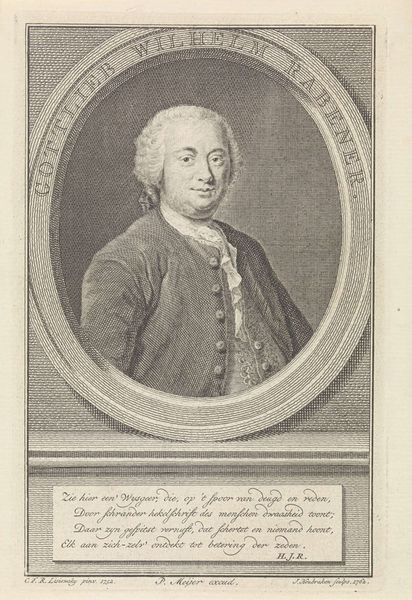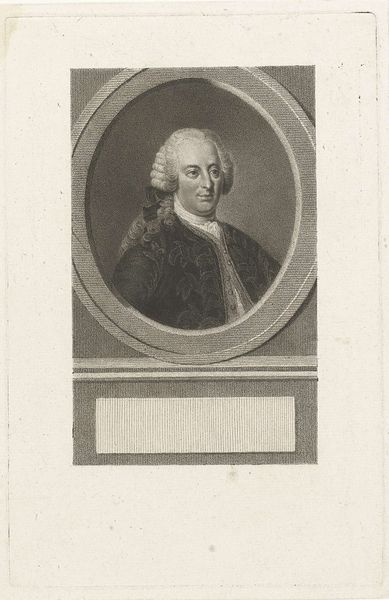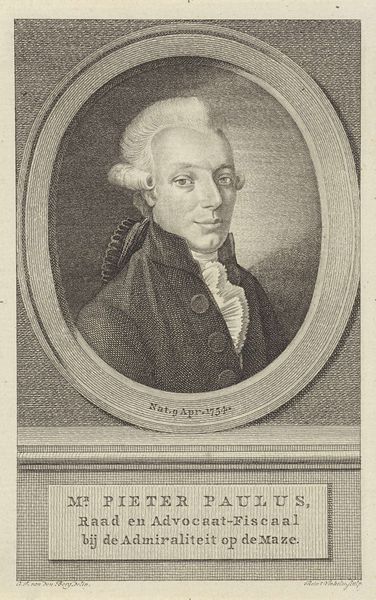
Dimensions: height 175 mm, width 122 mm
Copyright: Rijks Museum: Open Domain
Curator: Looking at this portrait, I immediately feel a sense of…precision. It's formal, clean, almost austere. Editor: That's an interesting observation. We're looking at "Portret van Jean-François de La Pérouse," a print made between 1785 and 1816, after Reinier Vinkeles. You can really see the meticulous nature of the engraving process here. It's incredible to consider the labor involved in creating those fine lines, that detail. Curator: Absolutely. Notice the symbolic framing; the sitter is placed within an oval, sitting atop what looks like an architectural support. It lends him an almost monumental quality. What do you think of the symbolic language at play here? Editor: Well, as a print, it was meant to be reproduced and widely distributed. So this level of formality also tells us something about 18th-century modes of creating and circulating images, influencing opinion of public figures like La Pérouse. How the means of producing and reproducing image democratizes art and information. Curator: That's a vital point. Considering La Pérouse's later disappearance during his voyage of exploration, this portrait gains a rather melancholy resonance. It acts as a historical marker. A visual placeholder for the man. It carries echoes of adventure, mystery, and a touch of sadness. Editor: Melancholy is right. And thinking about those lost voyages, the print itself becomes a poignant object. Made to honor him, distributed far and wide, but now acting as this… almost haunting reminder of a grand ambition. The lines, produced using graphite and engraving, freeze his legacy. Curator: In many ways this object shows that images possess this remarkable power to freeze a specific cultural understanding, allowing us to explore not just his physical appearance but the broader historical currents of his time. Editor: Precisely! For me it underscores how prints and other “reproducible” media had a crucial, and perhaps sometimes overlooked, impact in shaping both collective memory and history.
Comments
No comments
Be the first to comment and join the conversation on the ultimate creative platform.

